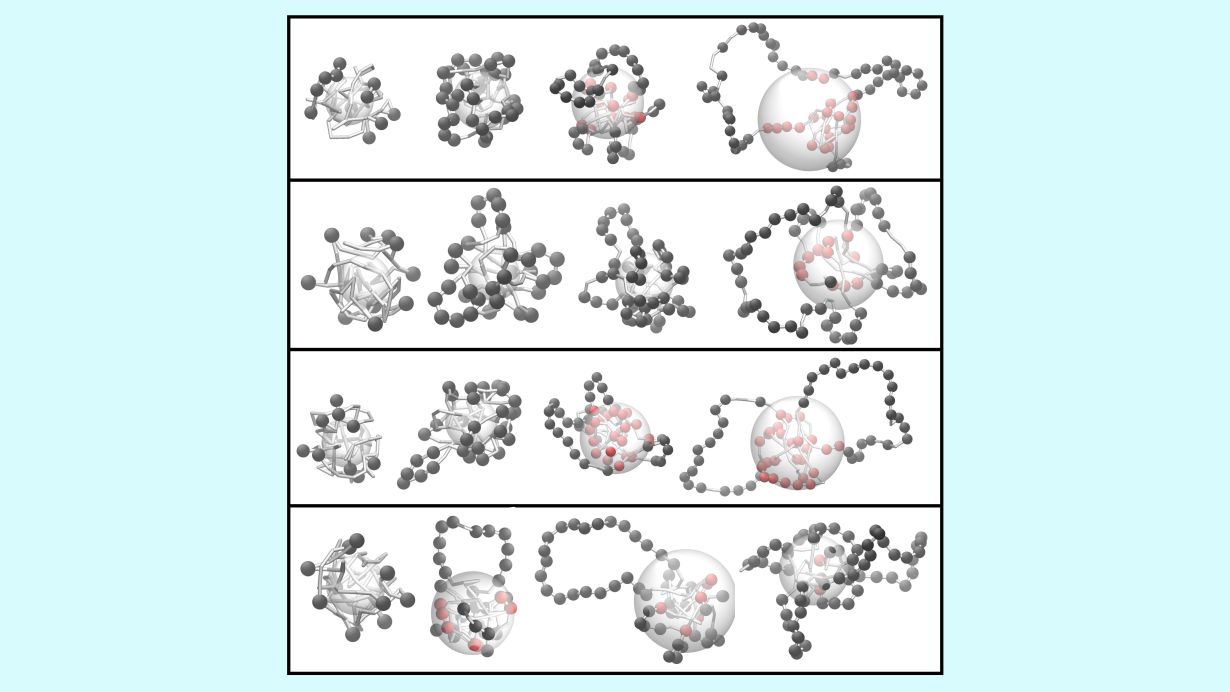There is more movement in our genome than we think. Almost half of the human genome consists of transposons – short DNA sequences capable of relocating within the genome. They “jump” from one place to another, not uniformly distributing across the genome, but often grouping together in clusters. Researchers at Karlsruhe Institute of Technology (KIT) have now discovered how this clustering occurs. This is made possible by a physical effect that results in local unfolding of the genome. The results were published in the Biophysical Journal. (DOI: https://doi.org/10.1016/j.bpj.2025.03.038)
A large part of the genome is composed of repetitive sequences, so-called transposons. They are involved in important processes, such as early embryonic development or control over which genes are used by the cell. Transposons can change their position in the genome. However, they cannot jump to just any part of the DNA because our DNA is not a loose thread, but is compactly folded in the cell nucleus – in a structure called chromatin. Some areas are particularly densely packed and difficult to access. Based on this knowledge, a research team led by Professor Lennart Hilbert at the Institute of Biological and Chemical Systems at KIT has now found an explanation for this transposon clustering. “Transposons can ‘unfold’ the genome at certain points, making it accessible for further transposons,” explains Hilbert. “This results in positive feedback where a transposon loosens the local structure of the DNA and others follow, turning individual jumps into group landings.”
Computer Simulation of Transposon Clustering
The researchers developed a computer simulation that replicates this exact process. In the simulation, the DNA unfolds step by step with the insertion of each additional transposon. The affected areas of the genome expand and loops emerge from the genome, in which the newly landed transposons accumulate.
Evolution Tames Transposons
Another surprise occurred when analyzing the mechanical properties of transposons during evolution. Most of these elements are now inactive, so they no longer jump, but have reshaped the architecture of the genomes over millions of years. “We have found that transposons that are still jumping or have been jumping until fairly recently are particularly flexible,” says Hilbert. “The longer ago the phase of active jumping for a transposon in evolutionary history, the less flexible the transposons become. This unexpected characteristic suggests that transposons are ‘tamed’ in their ability to jump during evolution.”
Findings about the behavior of transposons help researchers to understand how genomes were shaped over millions of years. They are also relevant for understanding the development of various diseases. LINE-1 transposons are particularly interesting. LINE-1 sequences (Long Interspersed Nuclear Element-1) are a family of repetitive DNA sequences that make up a large part of the human genome. They can be reactivated during the development of cancer and will then start jumping again. Their uncontrolled movement in the genome can lead to mutations that cause cancer.
Caption: Loop formation in a simulated section of the genome. From left to right, more transposons in the shape of spheres have been inserted into the area. From top to bottom, simulations are shown, in which the loop formation is increasingly pronounced. (Graphic: KIT)
Original publication
Roshan Prizak, Aaron Gadzekpo, Lennart Hilbert: Chromatin unfolding via loops can drive clustered transposon insertion, Biophysical Journal, 2025. https://doi.org/10.1016/j.bpj.2025.03.038
More about the KITHealthTech Center
In close partnership with society, KIT develops solutions for urgent challenges – from climate change, energy transition and sustainable use of natural resources to artificial intelligence, sovereignty and an aging population. As The University in the Helmholtz Association, KIT unites scientific excellence from insight to application-driven research under one roof – and is thus in a unique position to drive this transformation. As a University of Excellence, KIT offers its more than 10,000 employees and 22,800 students outstanding opportunities to shape a sustainable and resilient future. KIT – Science for Impact.

